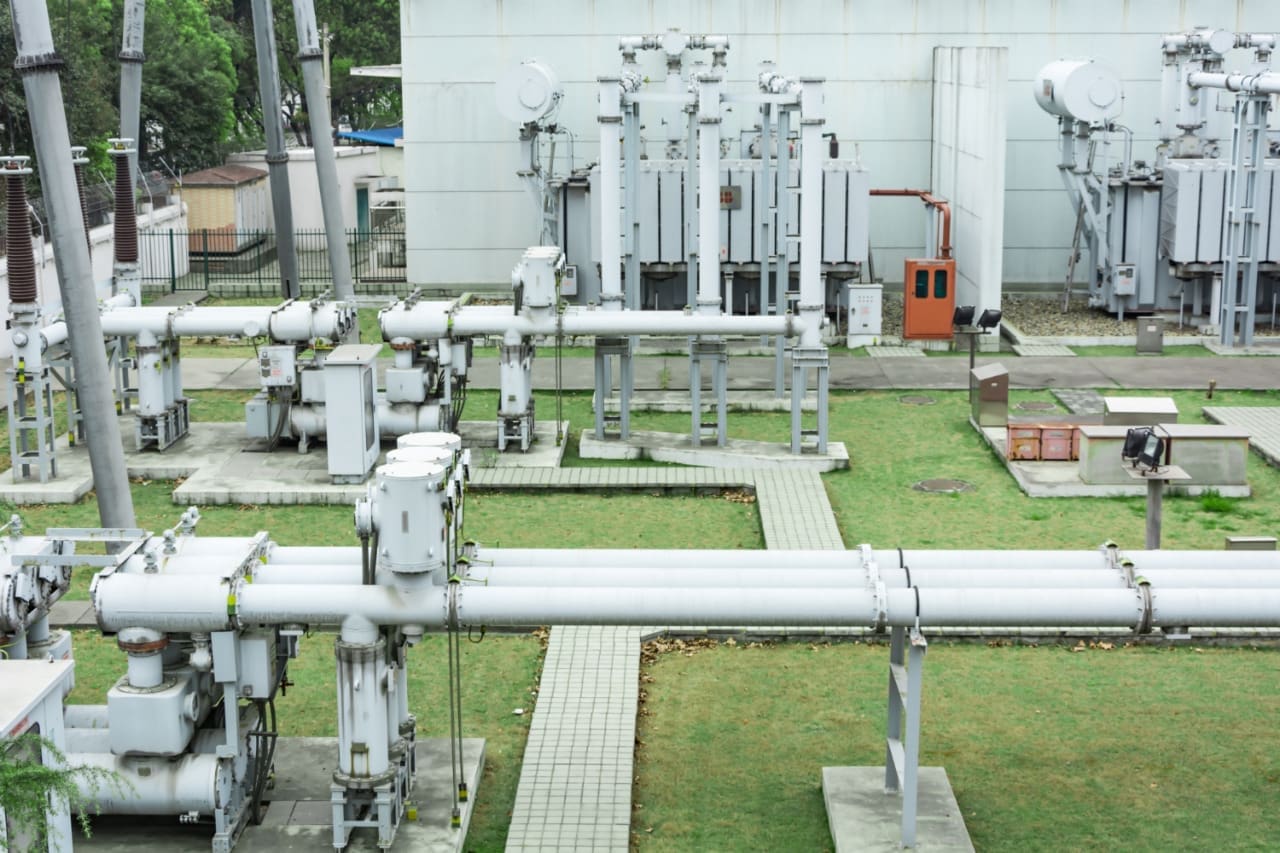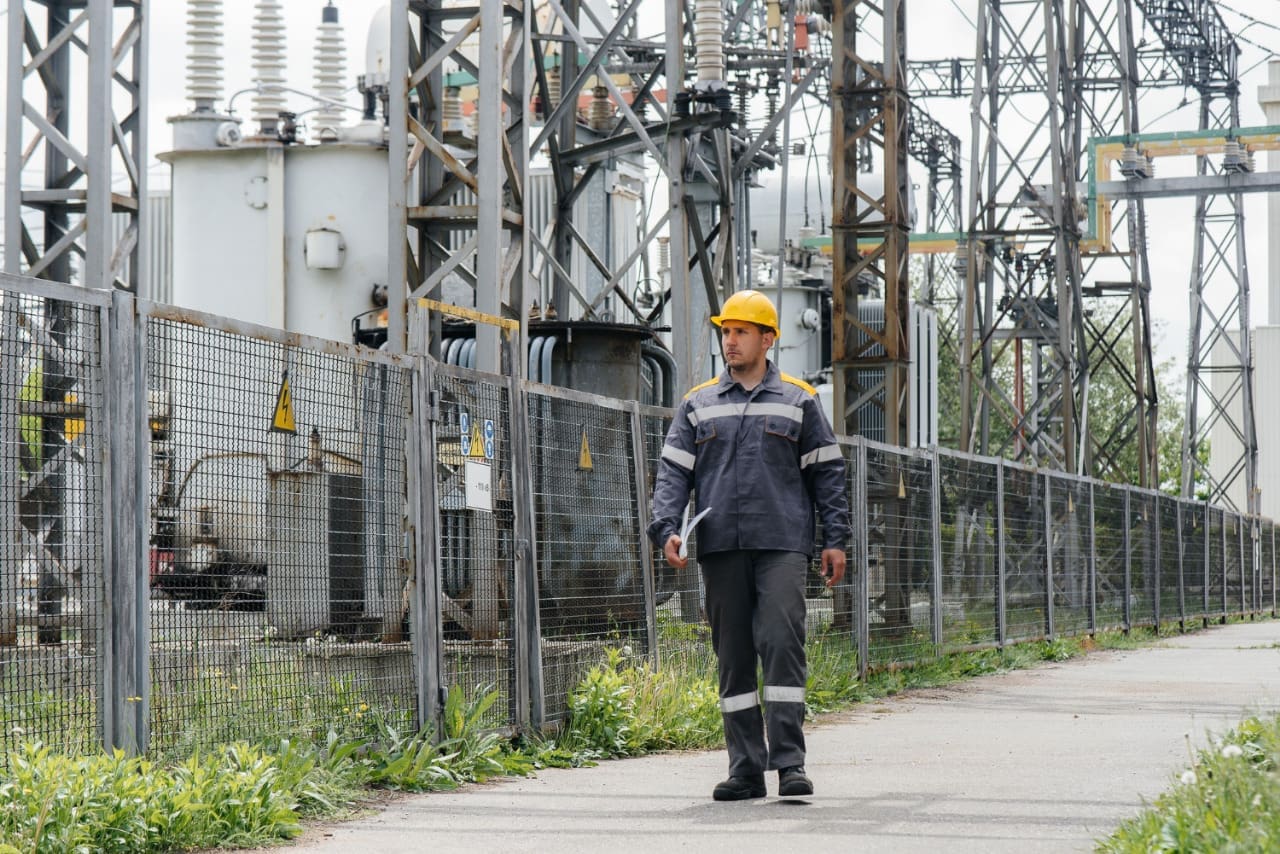GIS and AIS substation – comparison
 GIS and AIS substation
GIS and AIS substation
There are different types of substations in the power industry. They are divided not only by function or voltage, but also on the basis of switchgear technology. In this context, there are two main categories: GIS and AIS. What are these substations? Where does their name come from? How are they constructed? What are the advantages and disadvantages of both? And what factors should guide the decision on which type of station to choose?
GIS and AIS – explanation of abbreviations
The abbreviations GIS and AIS come from the English language and stand for Gas Insulated Switchgear, and Air Insulated Switchgear. Both abbreviations describe the different types of technology used in the switchgear construction process for substations. An efficient, reliable and safe electricity network cannot function without well-designed and, above all, customised substations.
Substation AIS – characteristics
AIS is a system that can be described as “traditional” or “classic,” as it is a technology widely used in the power industry. How does an AIS substation work? The air surrounding the switchboard is used to isolate conductors from various substation components, such as busbars, transformers, circuit breakers, disconnectors, earthing switches, surge arresters, etc. The use of air insulation determines the design of the switchboard, but it also influences the substation’s spatial requirements.
How are AIS substations constructed? The switchboard consists of high-voltage equipment designed to provide a space allowing it to be exposed to the ambient air, which naturally acts as an insulating medium. Glass, composite, and ceramic insulators are also used in HV equipment construction to isolate live components from grounding or interphase insulation.

Application of AIS
AIS switchgear is used in substations where large insulation distances can be accommodated and the substation’s spatial requirements do not pose a significant challenge. It is quite common in medium-voltage substations, as well as in substations built in rural areas or industrial facilities.
GIS substation – characteristics and application
Gas insulated switchgear (GIS) is a system in which the main insulating element is usually sulfur hexafluoride (SF6 gas). In this case, busbars, disconnectors, instrument transformers, lightning arresters, bushings, and other electrical components are insulated using SF6 gas, which has excellent insulating properties.
This technology is currently undergoing dynamic development, which gives new opportunities for GIS applications, including:
- in medium and high voltage substations
- in situations where the substation area is spatially limited
- in HVDC systems (high voltage direct current)
GIS and AIS – comparison
The main difference between GIS and AIS is the type of insulation technology used: gas or air. This, in turn, influences further differences, primarily the switchgear layout. AIS has a relatively simpler and more transparent structure. GIS, on the other hand, due to the reduced insulation distances, has a more complex and miniaturized structure. At the same time, another component distinguishing both solutions is the substation’s spatial requirements. If the Main Supply Point is located in a location where every centimetre counts, where space must be allocated for additional power poles and other network components, a GIS substation becomes the more natural choice. Where space is available, a traditional, proven solution – AIS can be safely chosen.
Another factor that distinguishes AIS from GIS is the cost of substation construction and subsequent operation. Building an AIS substation is a cheaper solution, due to its simpler structure, the lack of the need for specialized insulating gases, and the lack of investment in leak protection. It’s important to remember that SF6 gas has the highest global warming potential (GWP) of all known gases, so maintaining the highest safety standards is essential.
While investing in a GIS initially entails higher costs, operating a GIS substation can prove beneficial in the long run. The oil-free, gas-powered drive mechanism is characterized by a high degree of operational reliability. However, the failure rate of an AIS substation depends on external factors, as wind, precipitation, and other atmospheric phenomena can affect the substation’s components, which are susceptible to environmental factors. This, in turn, necessitates regular inspections and maintenance of individual substation components.
Advantages and disadvantages of GIS and AIS
Considering the above information, the main advantages of AIS include:
- simplicity of design
- widespread use
- long-term presence in the energy market
- lower costs of station construction
The disadvantages of this solution include:
- potentially higher operating costs
- the need for regular inspections and maintenance of components exposed to external factors
- greater space requirements for the substation
The main advantages of GIS are:
- smaller size than AIS
- higher efficiency than AIS
- dynamic development and new, emerging opportunities for technology application
The disadvantages of GIS include:
- higher cost of substation construction
- potentially higher environmental risk in the event of an SF6 gas leak
- more complex design requires professional service for operation and maintenance
Some features associated with individual solutions may change over time. For example, the cost of investing in GIS is decreasing as this technology advances. Therefore, it is possible to encounter situations where the modernization of overhead AIS substations involves adding GIS technology and implementing a hybrid solution. This is also one of the options investors should consider when deciding on the appropriate substation technology.